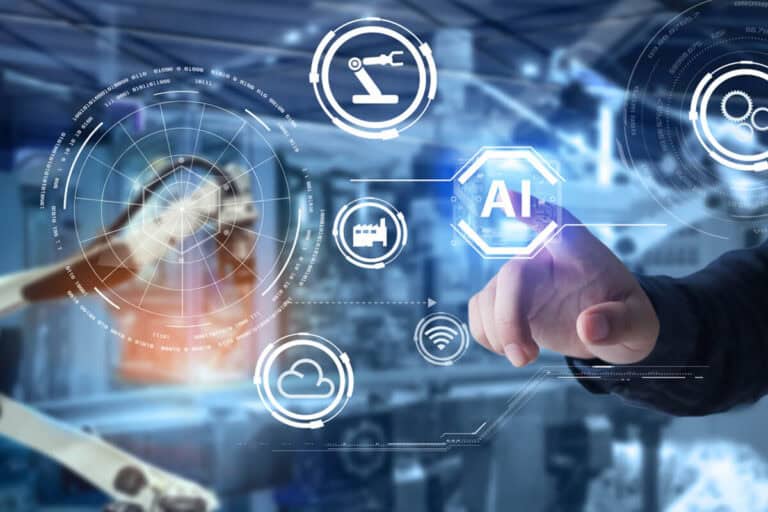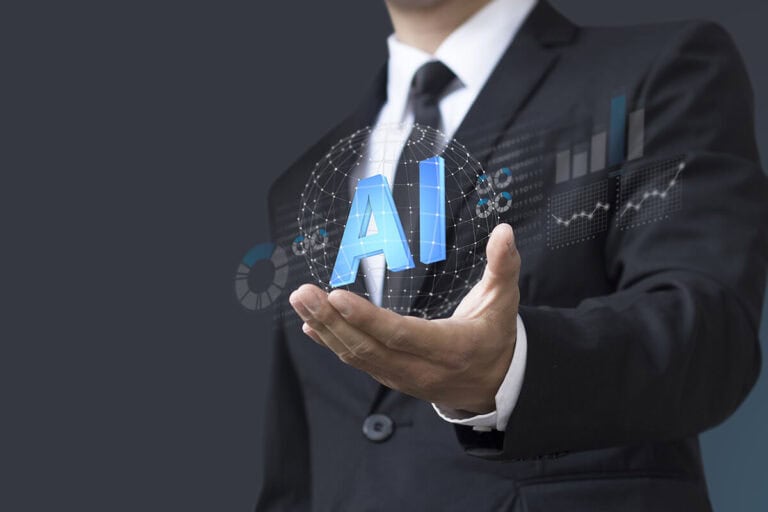Read on to learn why the advancement of AI and Big Data means that there are now cloud-based solutions for crunching the numbers in data analysis.
Table of Contents
ToggleData analysis has become an integral part of doing business. Whether to drive growth or improve services, analytics is essential to keeping up with the competition.
What happens when the amount of data you deal with is so large that human analysis is no longer practical? As with many other modern business issues, the solution is in technology.
As your data sets become more extensive, pulling meaningful insights from them becomes harder. The advancement of AI technology means that there are now cloud-based solutions for crunching the numbers.
The figures below from Finance Online show how valuable analytics can be for big data. Before we get into the practical applications, though, let’s ensure we fully understand big data and AI.

What Do We Mean by “Big Data”?
When we talk about big data in business, we talk about large data sets from various sources. Customer behaviors, interactions with software, your sales app, and all the streams of data coming into your business are components of big data.
We use the term big data to give all this separate information a collective name. First, this large amount of disparate data is collected together. Then businesses use a combination of AI and data warehousing solutions to sort and categorize the data for analysis.
Once you have all the data, this still doesn’t mean a lot. We need help from AI to pull meaningful insights out of the noise.
The Importance of AI
Artificial Intelligence has become a powerful business tool. It’s also highly accessible thanks to innovations in cloud computing. The key difference between AI and software is that AI doesn’t just perform pre-programmed actions but can make decisions.
AIs that come to market have been “trained” to interpret large data sets and make decisions based on what the AI learned. Essentially, the AI identifies patterns and applies a preset system of logic to choose an action.
We call this kind of AI training machine learning, and it involves human input to define the machine’s logic and correct mistakes. It is like we are teaching AI. And, with a deep learning layer, they can far exceed human performance.
AI analysis is critical to big data analytics. The ability of artificial intelligence to recognize patterns in data is unrivaled. It can also sort, categorize, and analyze the data coming into a business in real time.
How Does AI and Big Data Help My Business?
You’re doing business blindfolded without the insights that big data analysis can provide. Think of every customer interaction with technology, not just with your business but anywhere.
All of their habits and preferences are contained in that data. With so many sources of data, though, it’s impossible for a human analyst to pull it all together into a coherent form.
The more information you have about your customers, the better you can serve their needs. With the help of AI-driven analytics and ETL data (extract transform load), and you can use this data to optimize your user engagement strategies.
Analytics
AI dramatically improves the speed and efficiency of analytics, not just in sorting and archiving data but in interpreting and visualizing the results. Human analysts will still provide a vital role in organizations, but AI processes will help them succeed.
The ability to identify market trends in sets of data that were previously too large to parse is a big deal. This kind of analysis will lead to a further understanding of markets and consumers themselves.
Decision Making
Business data is only useful if it can help you make more informed decisions. That’s why AI-driven analysis of big data is a vital component. Without the analysis, the data is meaningless to your business. With it, you can make decisions based on real-time insights or historical data sets. This could include everything from your optimizing your outbound sales process or taking a new direction with your marketing campaigns.
This not only allows you to make decisions with a better understanding of your market, but it enables faster decisions as well. Tasks that would have taken teams of human analysts weeks to complete can now be automated and completed in minutes.
Process Improvements
Perhaps the most widely used advantage of AI in business development is automation. You’ve likely experienced business management apps that automate administrative tasks yourself.
The recent advancement of learning AI means more tasks can now be automated that used to require human input. Almost every aspect of your business, including customer service, sales, and finance, can be automated to improve efficiency.
Free to use image sourced from Pixabay
Practical Applications of AI and Big Data in Business
By now, it should be clear why extensive data analysis is important to a business. But how are businesses using this technology in practice?
There are opportunities for extensive data analysis to improve business processes in every industry. Let’s focus on a few sectors that are already embracing this technology.
Entertainment & Customer Service
It’s not surprising that customer service and entertainment-focused businesses are making use of big data. These areas are highly influenced by customer preference and behavior, after all. One of this area’s most prominent big data success stories is Netflix.
The online streaming service uses a recommendation system that is powered by big data. By pulling together all the data collected from their users, they saved $1 billion a year on customer retention.
The data included viewing habits, ratings, metadata like actors and directors, and more. The total number of rated items was 5 billion, which is multiple separate data pieces for each item in the orchestration layer. They needed the help of AI and cloud data storage to make the analysis possible.
The analysis results were fed back into the recommendations and personalization for users. This led to increased streaming hours and lower cancellation rates. Now, 75% of all content watched on Netflix is found through their recommendation system.
This is far from the only way to use big data to improve customer service. The personalization of e-commerce services has proven successful. Big data insights can make this personalization much more effective. Forming a more complete picture of customer behavior gives better results.
Healthcare
After marketing and entertainment, the healthcare industry is the next biggest adopter of big data analytics. From genome sequencing to patient records, big data and AI are both playing their role in improving medical services.
The volume of data dealt with by a national healthcare service like the UK’s NHS is staggering. As Arjun Panesar describes in his study, big data analysis can be applied to these datasets, allowing medics to extract trends from an incomprehensible amount of data.
The real-world use cases highlighted by Panesar include using AI to help identify details that are too small for the human eye to see, for example, on a radiology scan or MRI. Or even more commonly, using a smartphone app to monitor heart rate and collect information.
Logistics, Warehousing, & Retail
You might be wondering why these three industries are grouped together. They all perform separate functions. However, these three businesses are intrinsically linked. Retailers need stock, and manufacturers and stockists need transport to get their goods to retail.
Extensive data analysis can improve efficiency at every level of the chain. Logistics experts agree AI insights enhance functions like route planning and sensitive materials transport.
Business leaders such as Vijay Raja, Director of Marketing at Cloudera, echo these thoughts. Saying that the business agility provided by real-time logistics data gives advantages to efficiency.
“Smart warehousing” is the current buzzword for the warehousing industry. This often involves using AI for stock management, robotic automation, and big data analysis in combination. The biggest and most successful example of this is Amazon’s warehousing division.
Smart warehousing focuses on using all these technologies together, communicating and analyzing shared datasets, from product information, retail information, and all the other data produced by the business.
Predictive modeling can be used to keep warehousing and retail agile and able to respond to changing market conditions. Especially in the tech industry, manufacturing supply chain issues have been hit hard recently. Being able to react to situations like these is a significant advantage.
AI and Big Data – Conclusion
You can see from the examples above that AI and big data are not just theories, and they’re being used by the most successful organizations to make a real impact on revenue. You don’t need to be a huge multinational like Amazon to use these technologies, though.
Every business deals with data. The larger you get, the more data you process. Rescuing this data from separated silos and extracting meaningful insights can only benefit the business.
Whether you apply that to your digital employee experience management or your stock management system will be down to your business needs. Either way, adopting big data and AI technologies now will keep you from being left behind.
FAQ
A: AI plays a crucial role in business by leveraging advanced algorithms and machine learning techniques to analyze large volumes of data, automate tasks, make accurate predictions, and enable intelligent decision-making, ultimately driving operational efficiency and innovation.
A: Big data refers to the massive amount of structured and unstructured data businesses collect. It benefits businesses by providing valuable insights, identifying trends and patterns, enabling predictive analytics, supporting data-driven decision-making, improving customer experiences, and facilitating targeted marketing strategies.
A: AI leverages big data by processing and analyzing vast amounts of data to uncover hidden patterns, generate actionable insights, and make predictions. AI algorithms can extract meaningful information from big data, enabling businesses to optimize processes, personalize experiences, and identify new business opportunities.
A: Yes, AI and big data can significantly improve customer experiences. By analyzing customer data, AI can personalize recommendations, provide targeted marketing campaigns, optimize pricing strategies, and enable chatbots and virtual assistants for quick and personalized customer support, enhancing satisfaction and loyalty.
A: Numerous industries benefit from combining AI and big data. Examples include:
1. Retail and e-commerce (for personalized recommendations and inventory management).
2. Healthcare (for predictive analytics and disease diagnosis).
3. Finance (for fraud detection and risk assessment).
4. Manufacturing (for predictive maintenance and quality control).
5. However, the potential of AI and big data extends across various sectors.




